Arts and Cultural Exchange Bring Peace: Art-Sector Leader Sees Cambodia as World Contributor
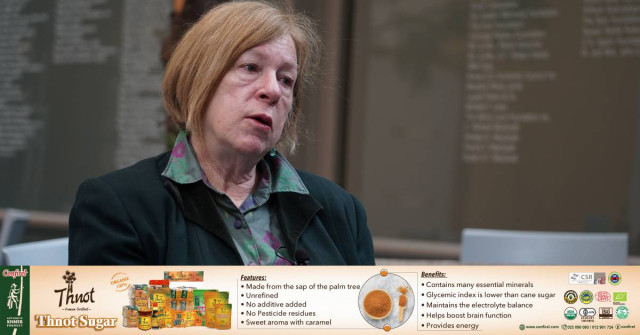
- By Teng Yalirozy
- January 5, 2024 4:15 PM
NEW YORK CITY — “Art and connections create peace,” says Rachel Cooper. And Cambodia is one of the potential leaders in creating a new vision and bringing together Southeast Asian artists, she said. However, she adds, the lack of promotion, recognition and support remain the challenges that Cambodian artists face in their country to achieve their full potential and play their role in the region.
“It’s important to place Cambodia in a leadership role,” said Rachel Cooper who is director of the Global Performing Arts and Cultural Initiatives at the Asia Society in New York, and on the Board of Directors of the NGO Cambodian Living Arts (CLA).
“We’re now 30 years later [after the wars and conflicts of the 1970s and 1980s] with a new generation,” she said. “It’s exciting to think about Cambodia in a leadership role in the arts and culture globally and as a leader to bring a new vision.”
Rachel Cooper, who first came to Cambodia in 1997, had been involved with Cambodian dancers and musicians since the early 90s. Her role at Asia Society—a global non-profit organization working to strengthen ties between Asia and the West through arts, education, policy, and business outreach—consists of connecting people through the arts.
The Asia Society was established in 1956 by the U.S. philanthropist John D. Rockefeller the Third who believed that the arts, culture, policy, contemporary affairs, business and education should be under one roof. Cooper believes that the arts must be in harmony and bring people together.
Her contact with Asia and Cambodia began well before joining Asia Society. “I have been involved with Cambodia for almost 30 years,” she said. “I grew up in Los Angeles, which has a fairly large Asian community. My mother was also very interested in Asia. So, it’s always been near and dear to my heart.”
Cambodian artists committed to the country’s culture and Buddhism
In Cooper’s experience, Cambodian artists tend to be different from those of other countries not in a cliche way but in the way they are committed to their culture, beliefs, arts and Buddhism. Working with young Cambodian artists who are in traditional arts or experimenting with them, and seeing how they would document traditional forms to retain them as they develop new ones has been thrilling, she said.
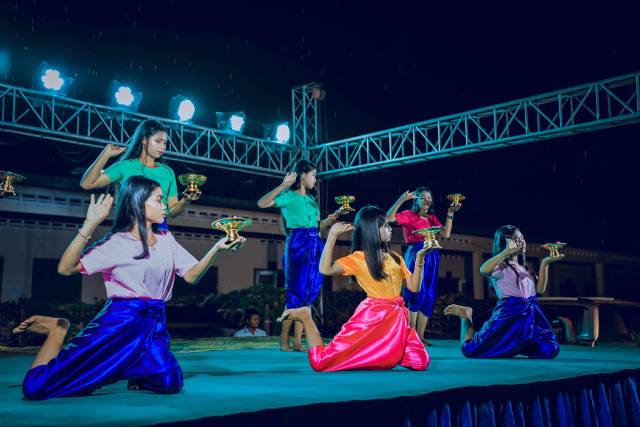 Artists of the Cambodian Living Arts (CLA) during their performance. Photo: CLA
Artists of the Cambodian Living Arts (CLA) during their performance. Photo: CLA
This commitment is important for Cambodia, according to Asia Society, which is involved in the arts, culture, policy, trade, and education.
Understanding another country and its people requires a comprehensive understanding of both its policy and cultural aspects, Cooper said. “We believe that to understand another country and their people, you have to have all of it,” she said. “You can't just be negotiating or doing the policy side, because I think the culture is equally important.”
Through Cambodian Living Arts (CLA), Cooper has worked on multiple projects. This has ranged from taking Cambodian artists on a U.S. tour of 12 cities two decades ago and working on reviving Cambodia's traditional arts after the Khmer Rouge era, to supporting the creative efforts of the younger generations of artists to help maintain and promote the country’s culture.
“They are working in lots of different ways, whether that's contemporary art, or popular music, or new dance,” she said. “It's an exciting time and that's what I find so important in the work of the organization because it's really about creativity,” she said of Cambodian Living Arts (CLA).
This NGO was launched in 1999 to help traditional performing-art artists who had survived the Pol Pot regime make a living and pass on their knowledge to the younger generations. Its focus has since evolved to include artists of both traditional and non-traditional art forms.
These artists have and are working in a country that places great importance on family, religion, traditions and a culture whose values and practice go back centuries, Cooper said. Moreover, Cambodia has a significant Buddhist population with 90 percent of the people being Theravada Buddhists, which is a tolerant, non-prescriptive religion that does not involve believing in a supreme being.
Striving although with Inadequate Support
A study by the Creative Industries of Cambodia Association for Development and Advocacy (CICADA) revealed that 50 percent of self-employed artists are in debt. Thirty percent of them were unemployed during the last six months of 2022, which inevitably put them in financial hardship. Most Cambodian artists are struggling as support in the country is minimal and they have to seek international support to survive.
According to Rachel Cooper, it is particularly crucial to raise artists’ income not only in Cambodia but also in the United States and around the world as it remains a challenge to convince people of the importance of the arts.
In the U.S., she said, there is a need for people doing the work she does to put the arts in context and background, emphasizing the importance of exchanges, such as one-year visiting-artist exchanges as they provide valuable insights for people of both countries involved.
Asked how support could be generated for the artists in Cambodia, Cooper said the work has to be done within Cambodia.
“It's difficult,” she said. “Even people who work in governments often don't fully understand why the arts are important. We have the same problem in this [U.S.] country.”
“Act Local, Go Global”
“If you have the respect locally for your own culture, [that respect] is going to strengthen it,” Rachel Cooper said.
Today, popular culture, music, and films are a global market that people access, and they are trying to balance them with their own. Because when two forms become owned by one group, issues may arise, she said.
For example, rock and roll became popular in Cambodia in the 1960s but, while they may have been influenced by international trends, Cambodia’s architecture, films, literature and the arts including popular and traditional music developed during that period, Cooper said. And Cambodia still has its rock and roll. The respect and appreciation of people in the country are important, as people have to own these artforms and feel they are their own, she said.
Artists such as Sophiline Cheam Shapiro, who grew up in the Khmer classical dance tradition, creates new works using traditional movements and forms as a language to say something else, Cooper said.
Cheam Shapiro is a renowned Khmer classical dancer by training, choreographer, and teacher, a master artist of this centuries-old tradition. Classical dance forms such as Khmer classical dance, Javanese court dance, and Indian Bharatnatyam are all classical forms that can be understood both as specific and part of the human experience, Cooper said.
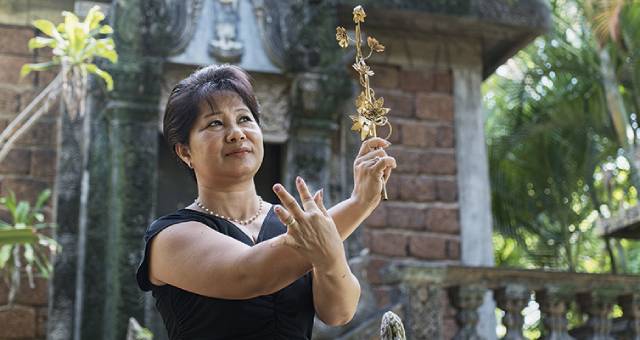 Cheam Shapiro is a renowned Khmer classical dancer by training, choreographer, and teacher, a master artist of this centuries-old tradition. Photo: Lim Sokchanlina
Cheam Shapiro is a renowned Khmer classical dancer by training, choreographer, and teacher, a master artist of this centuries-old tradition. Photo: Lim Sokchanlina
“That's about local people experiencing the arts or even being part of deciding what they're going to do,” she said. “That's local. The Global is going back to Cambodia as a leader, talking about difficult topics, such as post-conflict resolution, and how the arts can be a part of that. That's why I say I think there's a leadership role that brings in people globally.
“So to me, what I believe is very important is…to see the different classical dance forms,” Cooper said. “What does that mean? What does folk dance forms mean? There are ways to understand them both as very specific and also part of what it is to be human.”
The Arts to Tackle the Global Issues
The arts can help explain major global issues, particularly in Cambodia, through telling stories, Cooper said, in a way similar to journalists who understand the importance of framing and explaining these issues with words and visuals.
The arts tell stories, like Cambodia's dances can address agriculture, drought and floods, highlighting the importance of water in the country, she said.
“You can use the arts as a way of engaging people and thinking about why or how this system is,” Cooper said. “[On the walls of] Angkor Wat, you look at the depictions.” Scenes sculpted on this monument and several others at Angkor tell the story of events that took place during that era and show scenes of daily life, the artists informing people of what was happening.
The role of the arts, Cooper said, is amplifying and critiquing the culture of the moment. While acknowledging the financial struggle the artists face in Cambodia, she stressed the importance of empowering them and of their storytelling through their various artforms.
“That's an important role that the arts play, and it's certainly happening in Cambodia,” Cooper said. “That's why I said they are such profound artists, and I'm making everything sound like it's all been positive. I know it's been a struggle and that there have been moments when artists had spaces where they could work, and they lost them.”
Paintings serve as a powerful tool to address global issues, enabling people to express their views on politics, social issues, and personal experiences, Cooper said. Artists use visual art for social commentary, challenging viewers to confront societal issues, she added.
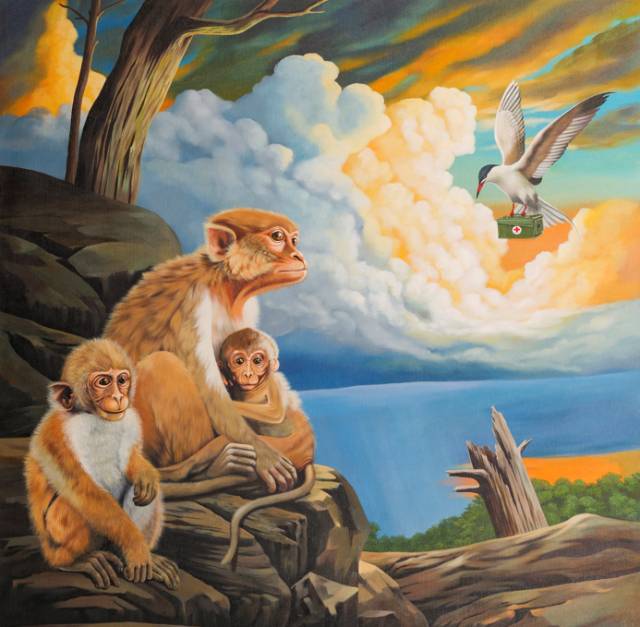 Painting entitled Hope by Cambodian artist Chhoeun Channy. It depicts the hope for the future of the planet amid climate change and serious environmental hazard. Photo: Sofitel Phnom Penh Phokeethra
Painting entitled Hope by Cambodian artist Chhoeun Channy. It depicts the hope for the future of the planet amid climate change and serious environmental hazard. Photo: Sofitel Phnom Penh Phokeethra
The Arts Must Not Disappear as They Reflect and Support their Countries
The work of young artists in Cambodia, particularly in their teens and early 20s, is valuable and should be fully supported, Cooper said. Creativity comes from creative people and connections among creative people from different fields sometimes lead to interesting outcomes, she said. After all, creation in science and technology may be due to imagination as it does in the arts, she said.
“They naturally come together,” Cooper said. “Even [the scientist] Einstein talked about how important the arts were, how important music was, how it changed how he thought. They're much more interspersed. [Which is why] I think they're more successful. And that's the case.”
With the current global situation that is troubled with no national borders, and ongoing conflicts, artists are trying to innovate, but leaders are not listening or aware, creating a tendency to monetize everything, Cooper said.
Markets are important, but artists and concerts are also important, as seen in places such as Ukraine, she said. “I know it sounds corny, but I think peace comes from people knowing each other, and not just East or West [but also] within the region itself. And that's important.”
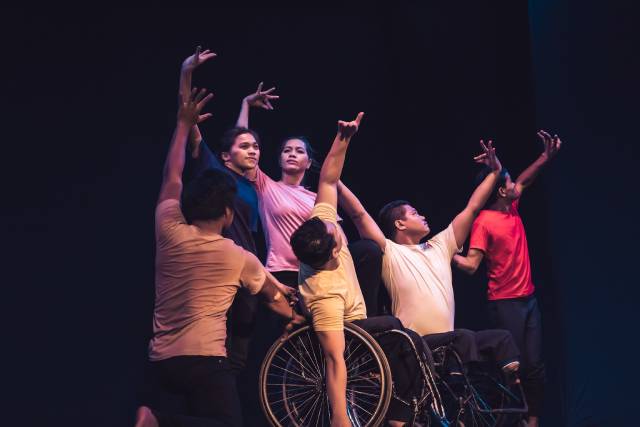 Artists at CLA during their performance. CLA promotes inclusiveness and diversity in art
Artists at CLA during their performance. CLA promotes inclusiveness and diversity in art















